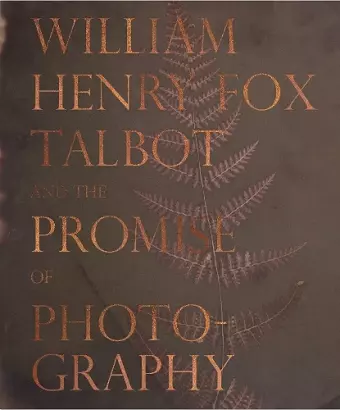William Henry Fox Talbot and the Promise of Photography
Format:Hardback
Publisher:Carnegie Museum of Art,U.S.
Published:16th Nov '17
Should be back in stock very soon

A handsome primer on the work of William Henry Fox Talbot.
This beautiful, small format publication serves as a primer on the work of William Henry Fox Talbot, a true interdisciplinary innovator who drew on his knowledge of art history, botany, chemistry and optics to become one of the inventors of photography in 1839. Talbot’s ‘photogenic drawings’ (photograms), calotypes and salted paper prints are some of the first ever examples of images captured on paper. Accompanying an exhibition at Carnegie Museum of Art in Pittsburgh opening in November 2017, this book brings together approximately 30 photographs by Talbot that demonstrate his wide ranging interests, including nature, still life, portraiture, architecture and landscape. Approximately one quarter of the featured images have been unpublished since Talbot’s time. Through thematic groupings elucidated by noted Talbot scholar Larry Schaaf, the book reveals the photographer’s early striving to test the boundaries of his medium at a historic moment when art and science intersected. With its luminous reproductions of Talbot’s fragile works, this publication demonstrates that, in its earliest days, photography required a form of magic making and innovation that continues to inspire people today.
A true 'gentleman scientist' of the Victorian period, Talbot combined his knowledge of chemistry, mathematics, and optics, with his interest in art, botany, and classics to invent the paper-based photography that dominated the field for most of the 19th and 20th centuries. Due to the fragile nature of the photographs, exhibitions of Talbot’s work are rare. * Wall Street International Magazine *
As Dan Leers, the curator of the Carnegie Museum of Art’s ... exhibition “William Henry Fox Talbot and the Promise of Photography,” explains, to display certain Talbot images would be to destroy them. To measure and control potential damage, Leers recently deployed a device called a spectrophotometer, which is used to help track degradation from exposure to light. He says that, if a reading of an image indicates any risk of “deep-sixing,” that particular photograph will no longer be displayed -- Max Campbell * New Yorker *
Talbot’s final innovations in photography entailed his incorporation of photographs into printed books. The reproducibility of his calotypes—and his photoglyphic and photographic engravings which printed images in ink—represented an entirely new way of disseminating pictures. Contemporary photographers continue to grapple with capturing, fixing, and sharing an image in the digital era. As a result, Talbot’s work feels as relevant today as it did 175 years ago. * ArtDaily *
With its luminous reproductions of Talbot’s fragile works, this publication demonstrates that early photography required a blend of magic-making and innovation -- Joanne Klimovich Harrop * Tribune Review *
A beautiful, small-format book that serves as a primer on the work of Talbot, featuring an introductory essay by curator Dan Leers and thematic groupings elucidated by noted Talbot scholar Larry Schaaf. With its luminous reproductions of Talbot’s fragile works, this publication (hardcover, 96 pages, 50 illustrations) demonstrates that early photography required a form of magic-making and innovation that continues to inspire people today. -- Michael Pritchard * British Photographic History *
ISBN: 9780880390606
Dimensions: unknown
Weight: 620g
96 pages